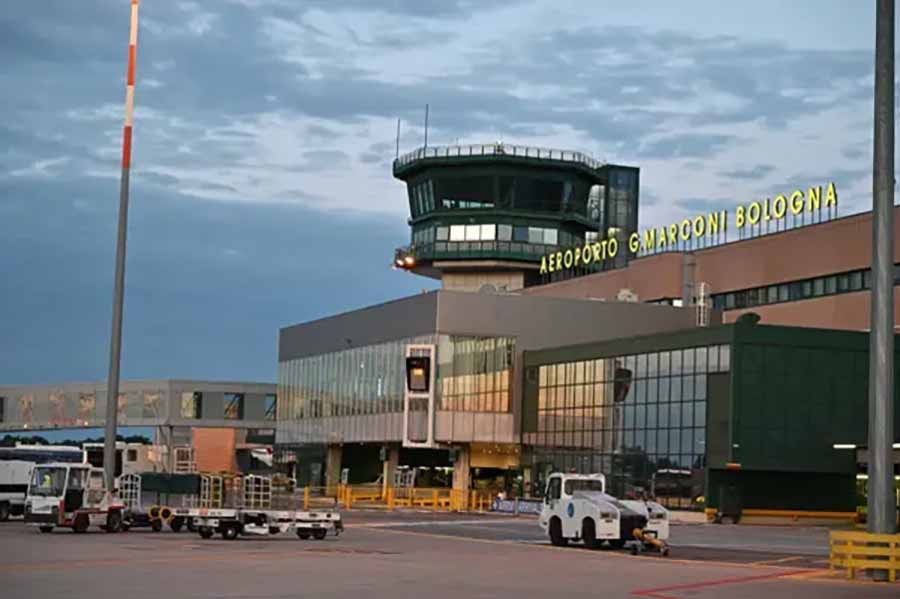
Bologna Guglielmo Marconi Airport, located 6 kilometres northwest of Bologna’s city centre in the Emilia-Romagna region, serves as Italy’s seventh-busiest airport, handling nearly 9 million passengers annually. Named after Nobel laureate Guglielmo Marconi, it connects to over 70 destinations via airlines like Ryanair, Lufthansa, and ITA Airways.
The airport’s single terminal, modernised in 2011, features check-in desks on the ground floor, security and departures on the first floor, and arrivals below. Clear signage in English and Italian ensures easy navigation, with Schengen flights in Area A and non-Schengen in Area B. The compact layout allows a 10-minute walk from one end to the other, though peak times can feel crowded due to limited gate space.
Accessing the airport is efficient with multiple transport options. The Marconi Express monorail links to Bologna Centrale railway station in just 7 minutes, running every 7-15 minutes from 5:40 AM to midnight for €11 one-way. Tickets are available online, via apps like Muver, or with contactless payment at stations. Bus Line 944 connects to the city centre in 20 minutes for €1.50, while buses to Modena, Ferrara, and Ravenna offer regional links.
Taxis to central Bologna cost €15-€20 for a 15-minute ride, and the A14 motorway’s exit 4 provides direct access for drivers, with 5,100 parking spaces, including 850 free spots. Car rentals from Hertz, Avis, and Sixt are available in the arrivals hall.
Dining and retail options cater to diverse tastes. Airside, passengers can enjoy Italian cuisine at restaurants like La Vecchia and Bottega Prosecco Bar, alongside cafes such as Puro Gusto and Briciole for quick bites. Duty-free shops offer perfumes and local products, while fashion outlets and Relay stores provide travel essentials.
Landside, a cafeteria serves light meals. Facilities include free Wi-Fi for six hours, ATMs, currency exchange, and a pharmacy open daily from 7:30 AM to 9:00 PM. The Marconi VIP Lounge, accessible for €26-€35, offers snacks, Wi-Fi, and fast-track security. Accessibility features include ramps, adapted toilets, and assistance for passengers with reduced mobility, bookable 48 hours in advance. A children’s play area and meeting rooms for up to 99 people are also available.
On-time performance is generally reliable, but peak morning and evening hours can lead to delays, with security queues reaching 30 minutes due to high passenger volumes. The new EDS C3 X-ray machines allow liquids up to 2 litres in carry-ons, streamlining screening, though non-Schengen passport checks can add time.
Weather disruptions and occasional Marconi Express outages, supplemented by buses, may affect schedules, so arriving three hours early for international flights is advised. Connections are efficient, with minimum times of 40 minutes for domestic and 45 minutes for international transfers within the single terminal. Passengers with separate tickets may need to reclaim luggage and recheck, adding up to an hour.
Potential delays to watch for include congestion at security and check-in during peak periods, with reports of inconsistent staff service slowing processes. Baggage handling can take up to 45 minutes during busy times, and limited seating airside may cause discomfort.
The Marconi Express’s past reliability issues, though improved, warrant checking updates before travel.
Ryanair
Ryanair operates flights to Dublin on Wednesdays, Fridays, and Sundays from Terminal A, with check-in desks typically in the main check-in area (desks 1–20). Exact desk numbers are displayed on airport screens. Bag drop is available 2 hours to 40 minutes before departure.
Departure Gates: Flights to Ireland (Dublin) usually depart from Schengen gates (gates 1–12). Specific gates are confirmed on departure boards or the Ryanair app.




